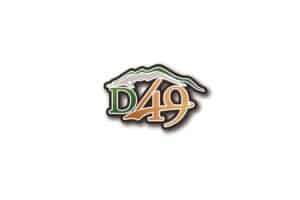The El Paso County Colorado School District 49ís Board of Education authorized the reorganization of its career and technical education, concurrent enrollment and work-based learning programs into one department at the regular May meeting. Mary Perez is the new director of the department, which is called the applied and advanced learning department.The reorganization is meant to reframe the idea that all career pathways require a four-year college degree, Perez said. Some might only require certifications, while others require a two-year or four-year degree, she said. The aim is to honor every student and every pathway, Perez said.Beginning in elementary school, students are exposed to work-based learning experiences through various ways, like classroom visits from industry professionals to virtual field trips, she said.In middle school, students district-wide take a survey, called the YouScience Career Interest and Aptitude Survey, to help them determine their natural talents and interests, Perez said. ìThey can then see what fields or jobs would work for them based on that information,î she said.ìStudents do the survey once in middle school and then again in high school. Once they get those high school results, they can view information about each job, including the salary, how much education they need, like a certification, a two-year degree, a four-year degree, or just work-based learning experience. It also tells them different colleges and universities that offer the different degrees.îThe conversation about the studentsí futures no longer starts with whether they want to go to college, Perez said. Instead, the conversation is about matching a career with the studentsí persona and interests.ìIf students can connect why they are coming to school with their own personal destination after high school, they might find more relevance and even be happier while they are in high school; and take their classes more seriously,î Perez said.CTE (career and technical education) learning opportunities are available beginning in middle school via elective classes, she said. In high school, students can continue to take those CTE classes, Perez said. About 40 percent of the high school student population in D 49 is looking into a CTE pathway that would require a certification or two-year degree, and they can finish those requirements while still in high school, she said.ìAs a community, we think everyone will appreciate people graduating and constructively contributing to their communities,î Perez said. ìThere are expected to be more than 1,000 jobs in the culinary and hospitality industries over the next three years because of all the hotels being built, and there is no pipeline to get people into those jobs.îD 49 is working with the 13 other districts in the Pikes Peak region to develop a consortium called the Pikes Peak Business and Education Alliance to create that pipeline, she said. The PPBEA brings together business and industry partners with representatives from each district to share and coordinate the various work-based learning opportunities, she said.ìWe have lots of connections in various industries and industry partners,î Perez said. ìWe could not fill those positions for them fast enough, so we shared that with the other districts; and they were so excited and were able to fill some of those opportunities with their students.îThe businesses in the region are eager to have students in their buildings doing internships, apprenticeships or job shadowing so they can hire those students later on, she said. Those students are making solid connections within the industry, which can lead to a position in the workforce immediately upon graduation, Perez said.Students who plan to attend college can use the concurrent enrollment option to get college credit while still in high school, Perez said. Concurrent enrollment classes are college-level classes taught by current D 49 high school teachers who have the graduate education and are qualified to teach those college-level classes, she said.In 2014, voters approved a mill levy override and designated those funds to go to technology, security, programming and teachersí salaries, she said. Some of that money is used to pay for studentsí tuition for concurrent enrollment in college classes while still in high school, Perez said.ìIf a student is taking classes in a D 49 high school building, we pay for everything, including tuition, fees and textbooks,î she said. ìThere is no cost to the parents unless their student fails the class with a D, F or withdrawal. Then the family must repay the tuition.îPerez said this method is an investment in the students but also ends up being a cheaper use of taxpayer money because students have the support of their high school counselor and their parents since they are still in high school.Rep. Tim Geitner, District 19, was a main sponsor of Senate Bill 19-176, which expands opportunities for students to earn post-secondary course credit while enrolled in high school.Taxpayer money pays for students to get high school credits anyway, so enabling them to earn post-secondary credits at the same time makes sense, Geitner said. ìI do not see how that could be a negative for the taxpayers of D 49,î Geitner said. ìI only see it as a first multiplier of that investment the taxpayers are making.îSB 19-176 also created a $1.5 million concurrent enrollment implementation or expansion grant, so that districts that lack funding to create or grow their concurrent enrollment program can compete for funding to meet that requirement, Geitner said.In December 2014, ìThe New Falcon Heraldî reported that 20 students were enrolled in concurrent enrollment classes; today, 650 students participate, Perez said.Students who earn college credit while in high school qualify for scholarships more often, lessening the burden of paying for college off their shoulders, she said.ìUltimately, we are getting away from the checklist of just counting credits to graduate,î Perez said. ìStudents are learning about things that they might or might not want to do; and they might get excited about something and connect the classes they are taking with what they really enjoy doing.î




